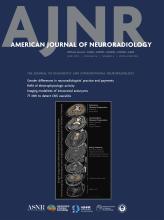Case of the Week
Section Editors: Matylda Machnowska1 and Anvita Pauranik2
1University of Toronto, Toronto, Ontario, Canada
2BC Children's Hospital, University of British Columbia, Vancouver, British Columbia, Canada
Sign up to receive an email alert when a new Case of the Week is posted.
July 29, 2021
Non-Hodgkin Lymphoma of Nasal Cavity and Paranasal Sinuses – Natural Killer Cell Type
- Background:
- Lymphomas of the nasal cavity and sinuses are rare, with variable incidence and immunophenotypic features among different populations.
- Nasal lymphoma with natural killer (NK) is more common in Asian countries, but there are also reports in Mexico and South America.
- There is an association with other malignancies such as Burkitt lymphoma and EBV infection.
- Clinical Presentation:
- Epistaxis, nasal obstruction, and nasal/face swelling
- Proptosis and hard palate involvement, as found in this case, are seldom observed and indicate a poor prognosis.
- Key Diagnostic Features:
- CT: Soft tissue isodense or hyperdense to soft-tissue lesions; homogeneous enhancement; CT is useful to assess bone destruction and invasion of adjacent compartments (orbit, palate, and anterior fossa).
- MRI: Predominantly intermediate on T1 and low to intermediate on T2/STIR with variable, but generally homogeneous, contrast enhancement; intense diffusion restriction on DWI
- Differential Diagnoses:
- Granulomatosis with polyangiitis: Nodulelike lesions with extensive enhancement of the mucosal tissues favoring the nasal cavity
-
Sinonasal carcinoma: Infiltrative lesions, generally with more heterogeneous enhancement and variable diffusion restriction; more likely to originate in the maxillary sinus
-
Esthesioneuroblastoma: Centered on the superior portion of the nasal cavity (cribriform plate); cystic components especially in the regions adjacent to the brain
-
Sinonasal melanoma: Heterogeneous but predominantly high intensity signal on T1 lesions
-
Treatment:
-
Patients with local disease appear to be well controlled with radiation therapy, but recurrence is high.
-
The combination of radiotherapy with chemotherapy is recommended. Multicompartment invasion in the orbits or palate holds a poor prognosis and a high level of recurrence even with the combined therapy.
-











